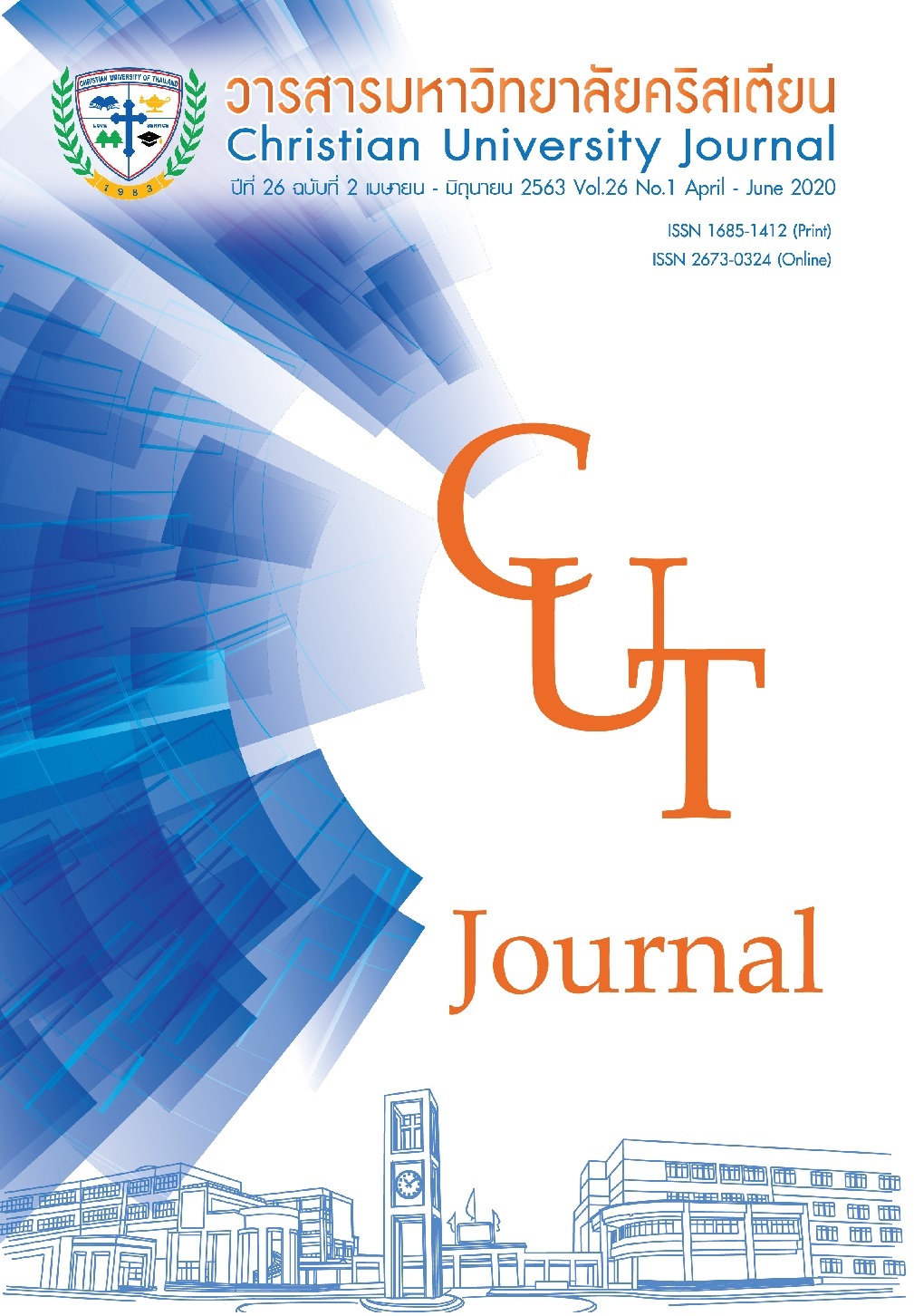ผลฉับพลันของการติดเทปกาวผ้ายืดติดผิวหนังต่อสมรรถนะการกระโดด ในนักกีฬาชายระดับมหาวิทยาลัย
คำสำคัญ:
เทปกาวผ้ายืดติดผิวหนัง, สมรรถนะการกระโดด, นักกีฬาระดับมหาวิทยาลัยบทคัดย่อ
การศึกษาครั้งนี้มีวัตถุประสงค์เพื่อเปรียบเทียบผลของการเทปกาวผ้ายืดติดผิวหนัง ระหว่างกลุ่มติดที่กล้ามเนื้อน่อง (Gastrocnemius) กับกลุ่มติดที่กล้ามเนื้อน่อง(Gastrocnemius)ร่วมกับกล้ามเนื้อต้นขาด้านหน้า (Quadriceps)ต่อสมรรถนะการกระโดด ซึ่งประกอบด้วยความสูงในการกระโดดและพลังกระโดด กลุ่มตัวอย่างในการวิจัยเป็นนักกีฬาเพศชายจำนวน 30 คน เป็นนักกีฬา บาสเก็ตบอล แบดมินตัน และวอลเลย์บอล ของมหาวิทยาลัยแม่ฟ้าหลวง โดยใช้การสุ่มตัวอย่างแบบจำเพาะเจาะจงเปรียบเทียบการติดเทป 4 ลักษณะ คือ 1) ไม่ติดเทป (No tape) 2) ติดเทปหลอก (Placebo tape) 3)ติดเทปกาวผ้ายืดติดผิวหนังที่กล้ามเนื้อน่อง (Gastrocnemius) (KG) 4) ติดเทปกาวผ้ายืดติดผิวหนังที่กล้ามเนื้อน่อง (Gastrocnemius) และกล้ามเนื้อต้นขาด้านหน้า (Quadriceps) (KGQ)โดยทําการกระโดดตามลําดับสุ่ม จํานวน3 ครั้ง และใช้ค่าที่ดีที่สุดเปรียบเทียบความแตกต่างของการติดเทปแต่ละลักษณะ ด้วยการวิเคราะห์ความแปรปรวนทางเดียวชนิดวัดซ้ำ (Repeated measure ANOVA) และการทดสอบความแตกต่างรายคู่ด้วยวิธี Bonferroniผลการวิจัยพบว่า มีความแตกต่างอย่างมีนัยสำคัญ ระหว่างกลุ่มติดเทปหลอกและกลุ่มติดเทปกาวผ้ายืดติดผิวหนังแบบ facilitation technique บนกล้ามเนื้อน่อง (Gastrocnemiusและกล้ามเนื้อต้นขาด้านหน้า) (Quadriceps) ในตัวแปรความสูงของการกระโดด และพลังกระโดด (p=0.015 และ p=0.008 ตามลำดับ) การศึกษาครั้งนี้สรุปว่าการติดเทปกาวผ้ายืดติดผิวหนังที่กล้ามเนื้อน่องและกล้ามเนื้อต้นขาด้านหน้า ทำให้ความสูงของการกระโดดและพลังกระโดดมากขึ้น เมื่อเปรียบเทียบกับการติดที่กล้ามเนื้อมัดเดียว และการติดเทปหลอก ดังนั้นนักกีฬาและผู้ฝึกสอน จึงควรพิจารณาให้การใช้เทปกาวผ้ายืดติดผิวหนังด้วยเทคนิคที่กระตุ้นเพื่อเพิ่มสมรรถนะสูงสุดให้กับนักกีฬา
เอกสารอ้างอิง
Ashley, C., & Weiss, L. (1994).Vertical Jump Performance and Selected Physiological Characteristics of Women.Journal of Strength and Conditioning Research, 8(1), 5–11.
BernatBuscà, Daniel Moreno Doutres, Javier Peña, Jose Morales, Mònica Solana Tramunt,&Joan Aguilera Castells. (2018). Effects of jaw clenching wearing customized mouthguards on agility, power and vertical jump in male high-standard basketball players.Journal of Exercise Science&Fitness, 16(1), 5-11.
Cheung, R.T.H., Yau, Q.K.C., Wong, K., Lau, P., So, A., Chan, N., Yung, P.S.H. (2016). Kinesiology tape does not promote vertical jumping performance: A deceptive crossover trial. Manual Therapy, 21, 89–93.
Davis, D. S., Briscoe, D.A., Markowski, C.T., Saville, S.E., & Taylor, C.J. (2003).Physical characteristics that predict vertical jump performance in recreational male athletes.Physical Therapy in Sport, 4(4), 167–174.
Gómez-Soriano, J., Abián-Vicén, J., Aparicio-García, C., Ruiz-Lázaro, P., Simón-Martínez, C., Bravo-Esteban, E., &Fernández-Rodríguez, J.M. (2014). The effects of Kinesio taping on muscle tone in healthy subjects: A double-blind, placebo-controlled crossover trial. Manual Therapy, 19(2), 131–136.
Huang, C.Y., Hsieh, T.H., Lu, S.C., & Su, F.C. (2011).Effect of the Kinesio tape to muscle activity and vertical jump performance in healthy inactive people.BioMedical Engineering OnLine, 10(1), 70.
Lai, C.C., Chen, S.Y., Yang, J.L., & Lin, J.J. (2019). Effectiveness of stretching exercise versus kinesiotaping in improving length of the pectoralis minor: A systematic review and network meta-analysis. Physical Therapy in Sport, 40, 19–26.
Lins, C.A.A., Neto, F.L., Amorim, A.B.C., Macedo, L.B., &Brasileiro, J.S. (2013).Kinesio Taping® does not alter neuromuscular performance of femoral quadriceps or lower limb function in healthy subjects: Randomized, blind, controlled, clinical trial. Manual Therapy, 18(1), 41–45.
Magalhães, I., Bottaro, M., Mezzarane, R.A., Neto, F.R., Rodrigues, B.A., Ferreira-Júnior, J.B., &Carregaro, R.L. (2016).Kinesiotaping enhances the rate of force development but not the neuromuscular efficiency of physically active young men. Journal of Electromyography and Kinesiology, 28, 123–129.
Mendes Jr., J., Vieira, M., Pires, M., &Stevan Jr., S. (2016).Sensor Fusion and Smart Sensor in Sports and Biomedical Applications.Sensors, 16(10), 1569.
Miller, M.G., Michael, T.J., Nicholson, K.S., Petro, R.V., Hanson, N.J., & Prater, D.R. (2015).The Effect of Rocktape on Rating of Perceived Exertion and Cycling Efficiency.Journal of Strength and Conditioning Research, 29(9), 2608–2612.
Morris, D., Jones, D., Ryan, H., & Ryan, C.G. (2013). The clinical effects of Kinesio® Tex taping: A systematic review. Physiotherapy Theory and Practice, 29(4), 259–270.
Mostaghim, N., Jahromi, M.K., Shirazzi, Z.R., &Salesi, M. (2016).The effect of quadriceps femoris muscle Kinesio Taping on physical fitness indices in non-injured athletes.The Journal of Sports Medicine and Physical Fitness, 56(12), 1526–1533.
Nunes, G.S., de Noronha, M., Vargas, V.Z., Wageck, B., Haupenthal, D.P.D.S., & Luz, C.M.da. (2015). How strong are the physiological theories on which Kinesio Taping is based? Journal of Physiotherapy, 61(4), 231–232.
Russell, S., Jenkins, D., Smith, M., Halson, S., & Kelly, V. (2018). The application of mental fatigue research to elite team sport performance: New perspectives. Journal of Science and Medicine in Sport,22(6), 723-728.
Strutzenberger, G., Moore, J., Griffiths, H., Schwameder, H., & Irwin, G. (2016).Effects of gluteal kinesio-taping on performance with respect to fatigue in rugby players.European Journal of Sport Science, 16(2), 165–171.
Yen, S.C., Folmar, E., Friend, K.A., Wang, Y.C., & Chui, K.K. (2018). Effects of kinesiotaping and athletic taping on ankle kinematics during walking in individuals with chronic ankle instability: A pilot study. Gait & Posture, 66, 118–123.
Young, W. B., &Behm, D.G. (2003).Effects of running, static stretching and practice jumps on explosive force production and jumping performance.The Journal of Sports Medicine and Physical Fitness, 43(1), 21–27.



